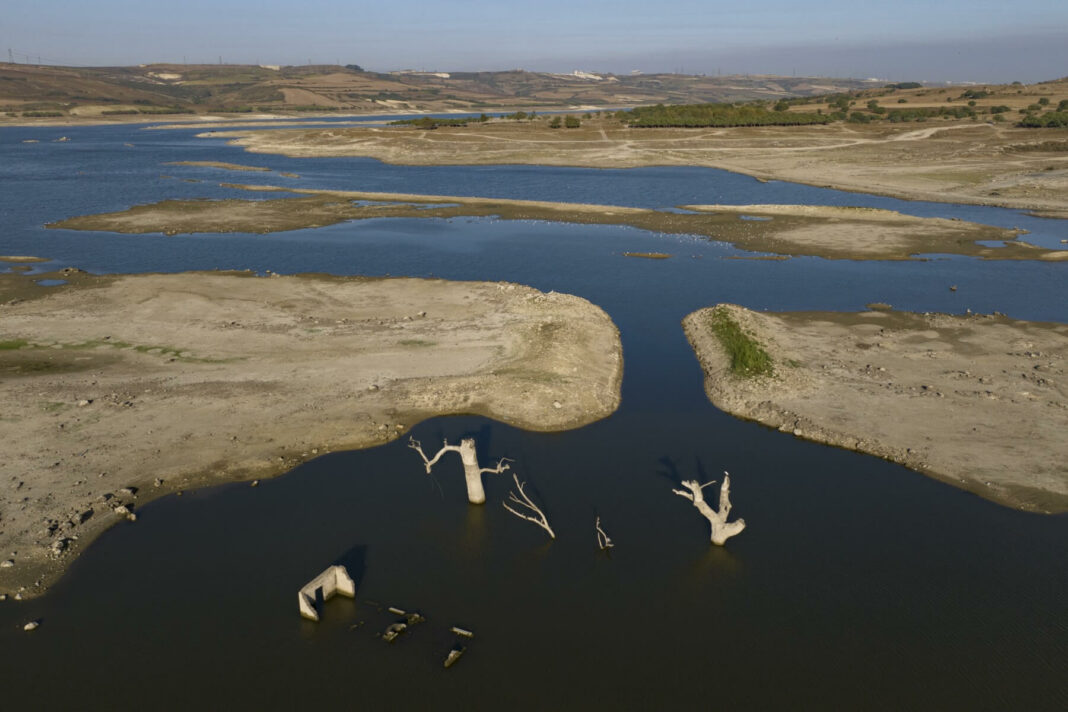The bank of screens in İsmail Aydın’s İstanbul water management system control room flashes a worrying number: 29.7 percent.
That is the capacity level to which İstanbul’s water reservoirs have dropped after another steamy summer put Turkey’s largest city on the edge of a potential catastrophe.
Aydın does not want to sow panic and speaks in reassuring tones.
The rainy season is approaching and water levels should pick up in the coming weeks.
But Aydın admits what the city’s 16 million official — and 20 million estimated — inhabitants have known for some time.
“We’ve had a dry season,” the water and sewage administration chief said.
“Water levels were at 60 percent this time last year,” he said. “It dropped down to 14 percent in 2014, so this is the second-lowest in the past 10 years.”
İstanbul is surrounded by a web of 11 dams that fill up with water when the heaviest precipitation falls in November and December.
But global warming caused by human-caused greenhouse gas emissions is changing weather patterns and giving Aydın constant stress.
İstanbul has had barely any precipitation at all this summer and water usage has soared because of the heat.
Turkey as a whole experienced the hottest July on record and broke the 50-degree Celsius (122-degrees Fahrenheit) mark for the first time in modern history on August 14.
Booming growth
The city could ship in extra supplies of water by sea or road should the dams run completely dry — although no specific plans have been laid yet for that gloomy possibility.
İstanbul’s problems are compounded by its phenomenal growth.
The city had almost as many dams when its population was just over five million people 30 years ago and water consumption was not a hot topic in the news.
Officials now make regular media appearances pressing İstanbulites to conserve water any way they can.
Aydın’s department sent a mass text message during a particularly hot spell warning that the situation was becoming unsustainable.
“The storage volume of our dams in İstanbul is approximately 868 million cubic meters. But İstanbul’s annual consumption is 1.1 billion cubic meters,” Aydın told AFP.
“İstanbul’s (dams) do not have enough water to last a full year. İstanbul is a city in need of continuous rainfall. Our groundwater is not enough.”
The lack of rain is turning some parts of the emptied dams into rolling meadows that flocks of sheep and goats roam on the city’s outskirts.
Pensioner Nejat Karakaş grew up around water and likes to visit the dams to while away the time.
He leaned glumly against the side of an upturned rowboat lying on the cracked dry bed and contemplated climate change.
“It makes me sad. We’re not used to seeing it like this,” the 68-year-old said. “If there is no rain between now and October, bad days await İstanbul.”
Worried youth
Aydın’s attempts to raise awareness and change İstanbulites’ habits appear to be making some inroads.
Driver Hasan Sadıkoğlu said he has fitted a large plastic bottle into his toilet tank to conserve a liter of water with every flush.
“When the children brush their teeth, the tap is opened and closed,” the 53-year-old said. “One brush, one open.”
Aydın’s department has also announced plans to install special devices on faucets of households that consume more than a set amount of water every month.
The idea is to reduce households’ water pressure once the usage limit is breached.
“Very effective measures should be taken, especially in water management,” Aydın said. “Saving is a priority, recycling is a priority.”
Student Mine Altıntaş said she already tries to conserve water while washing dishes and doing laundry.
But she worries that this will not be enough.
“All of us, the whole country and even the whole world, is worried,” the 18-year-old said.
“I don’t know what will happen in 10 years. I am still young, and I don’t know how much water we will have later on.”
© Agence France-Presse



